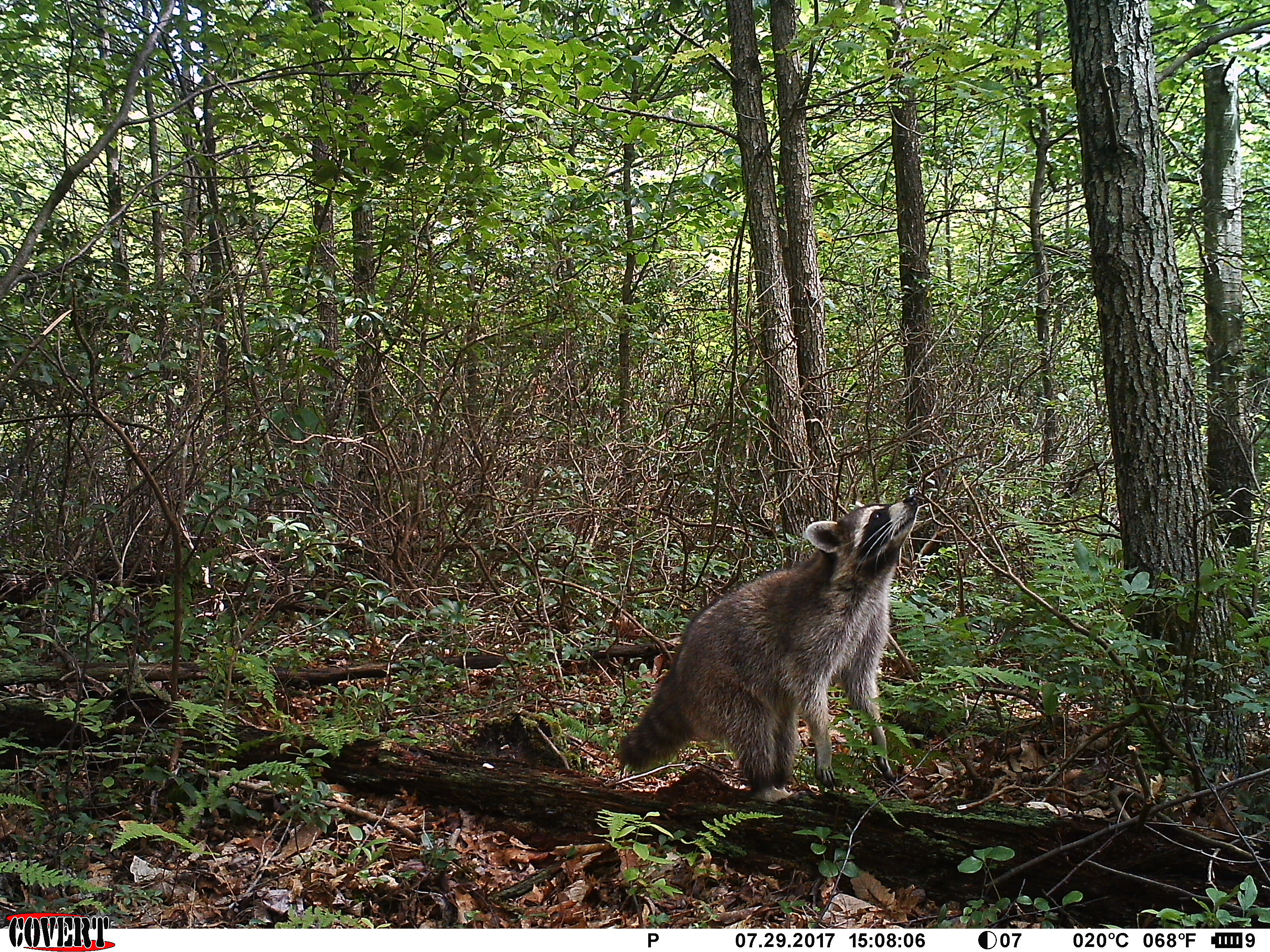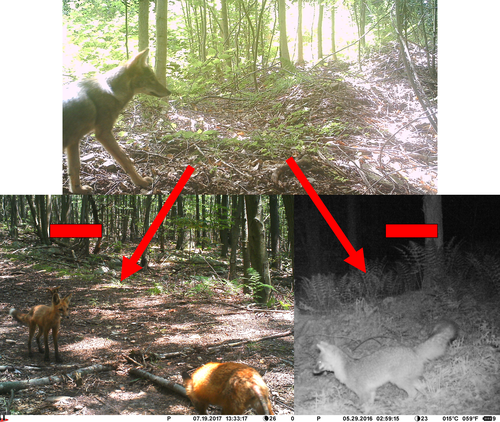It’s done! The fieldwork portion of #whoseatingbambi—running around all summer with 100 game cameras along with bottles and bottles of bobcat pee—is finished! Over the past two years (and a small test-run in 2015), we ended up surveying 339 spots in our three study sites (Bald Eagle, Rothrock, and Susquehannock).
Our cameras ran for the equivalent of 49 years and two months, getting over 200,000 pictures as a result. We went through boxes of batteries, gallons of bobcat pee, and plenty of DEET, all to provide cool information on where carnivores are and how that influences where fawns are.
In the next few blog posts, I’ll be talking about some of the preliminary results we’ve found. To start off, we’ll cover a who’s who. Basically, a roster of who we saw on camera!
Here’s a cool graph.

This is the number of detections—or individual captures—of ten carnivore species (and fawns, of course) that we saw on camera. And, yes, we did see ten species of carnivore, ranging from black bears to red foxes and fishers! The species we saw the most, however, is the humble raccoon (aka trash panda).

So why did we get so many pictures of some species (like raccoons or opossums) versus other species (like gray foxes and skunks)? This depends on a number of things. If there are a lot of something in an area—which is probably the deal with the raccoons and opossums—then you are going to get more pictures of them, compared to a species that typically lives in very low numbers, like fishers.

Another reason might be the type of habitat we put the cameras in. We tended to focus in areas within the state forest versus edge areas that were highly disturbed. Some species tend to do better in more edge-y areas, like skunks.

What about the presence of other species? For example, the prevalence of coyotes might have made it so that we saw fewer foxes (gray and red) at our cameras. It is well-documented that coyotes kill foxes because they see them as competitors for the same types of resources.

And sometimes it all comes down to chance! Luckily for me, we got enough detections of the four species we want to focus on—black bears, coyotes, bobcats, and fawns—to run the analyses that will help me get my degree! We’ll talk more about those analyses in another blog post of course.
Ph.D. graduate student
If you would like to receive email alerts of new blog posts, subscribe here.
And Follow us on Twitter @WTDresearch
